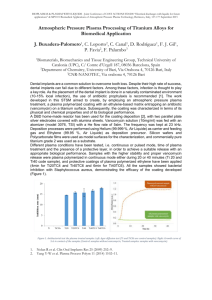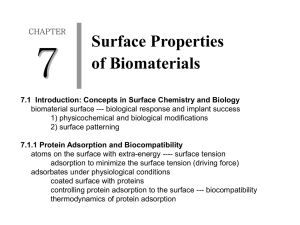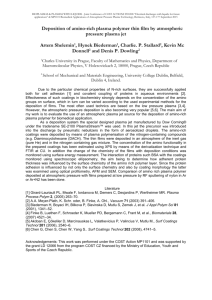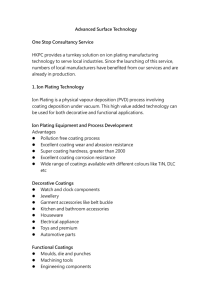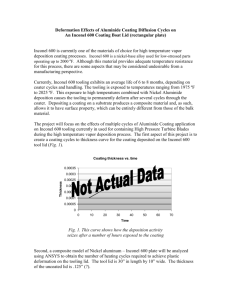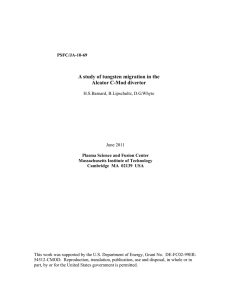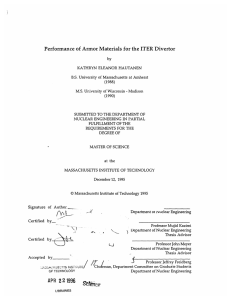NN-Begrambekov_e
advertisement
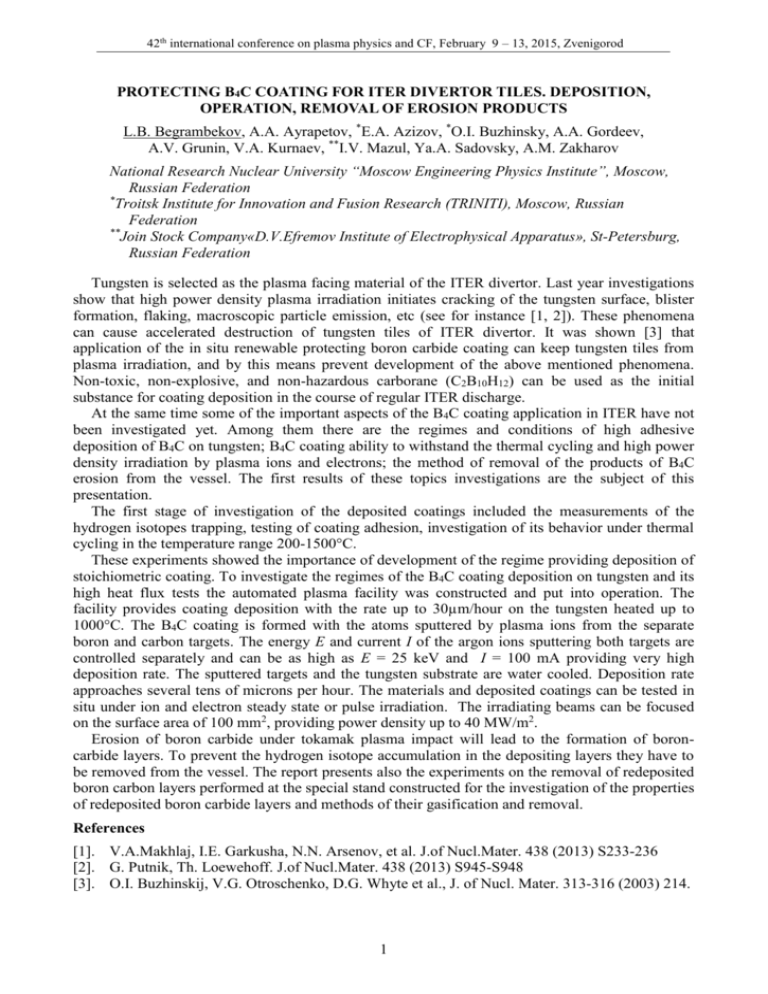
42th international conference on plasma physics and CF, February 9 – 13, 2015, Zvenigorod PROTECTING B4C COATING FOR ITER DIVERTOR TILES. DEPOSITION, OPERATION, REMOVAL OF EROSION PRODUCTS L.B. Begrambekov, A.A. Ayrapetov, *E.A. Azizov, *O.I. Buzhinsky, A.A. Gordeev, A.V. Grunin, V.A. Kurnaev, **I.V. Mazul, Ya.A. Sadovsky, A.M. Zakharov National Research Nuclear University “Moscow Engineering Physics Institute”, Moscow, Russian Federation * Troitsk Institute for Innovation and Fusion Research (TRINITI), Moscow, Russian Federation ** Join Stock Company«D.V.Efremov Institute of Electrophysical Apparatus», St-Petersburg, Russian Federation Tungsten is selected as the plasma facing material of the ITER divertor. Last year investigations show that high power density plasma irradiation initiates cracking of the tungsten surface, blister formation, flaking, macroscopic particle emission, etc (see for instance [1, 2]). These phenomena can cause accelerated destruction of tungsten tiles of ITER divertor. It was shown [3] that application of the in situ renewable protecting boron carbide coating can keep tungsten tiles from plasma irradiation, and by this means prevent development of the above mentioned phenomena. Non-toxic, non-explosive, and non-hazardous carborane (C2B10H12) can be used as the initial substance for coating deposition in the course of regular ITER discharge. At the same time some of the important aspects of the B4C coating application in ITER have not been investigated yet. Among them there are the regimes and conditions of high adhesive deposition of B4C on tungsten; B4C coating ability to withstand the thermal cycling and high power density irradiation by plasma ions and electrons; the method of removal of the products of B4C erosion from the vessel. The first results of these topics investigations are the subject of this presentation. The first stage of investigation of the deposited coatings included the measurements of the hydrogen isotopes trapping, testing of coating adhesion, investigation of its behavior under thermal cycling in the temperature range 200-1500°C. These experiments showed the importance of development of the regime providing deposition of stoichiometric coating. To investigate the regimes of the B4C coating deposition on tungsten and its high heat flux tests the automated plasma facility was constructed and put into operation. The facility provides coating deposition with the rate up to 30µm/hour on the tungsten heated up to 1000°C. The B4C coating is formed with the atoms sputtered by plasma ions from the separate boron and carbon targets. The energy E and current I of the argon ions sputtering both targets are controlled separately and can be as high as E = 25 keV and I = 100 mA providing very high deposition rate. The sputtered targets and the tungsten substrate are water cooled. Deposition rate approaches several tens of microns per hour. The materials and deposited coatings can be tested in situ under ion and electron steady state or pulse irradiation. The irradiating beams can be focused on the surface area of 100 mm2, providing power density up to 40 MW/m2. Erosion of boron carbide under tokamak plasma impact will lead to the formation of boroncarbide layers. To prevent the hydrogen isotope accumulation in the depositing layers they have to be removed from the vessel. The report presents also the experiments on the removal of redeposited boron carbon layers performed at the special stand constructed for the investigation of the properties of redeposited boron carbide layers and methods of their gasification and removal. References [1]. V.A.Makhlaj, I.E. Garkusha, N.N. Arsenov, et al. J.of Nucl.Mater. 438 (2013) S233-236 [2]. G. Putnik, Th. Loewehoff. J.of Nucl.Mater. 438 (2013) S945-S948 [3]. O.I. Buzhinskij, V.G. Otroschenko, D.G. Whyte et al., J. of Nucl. Mater. 313-316 (2003) 214. 1


